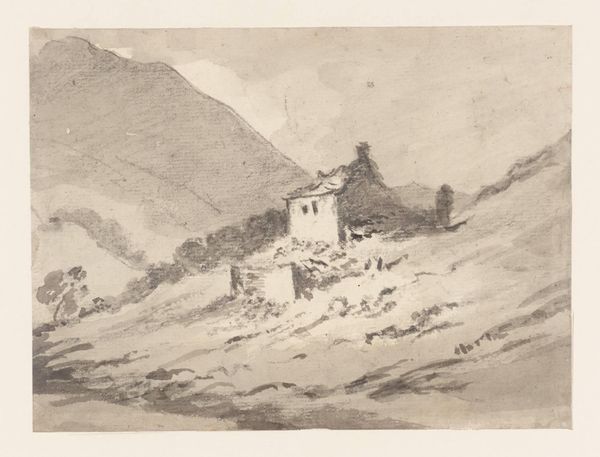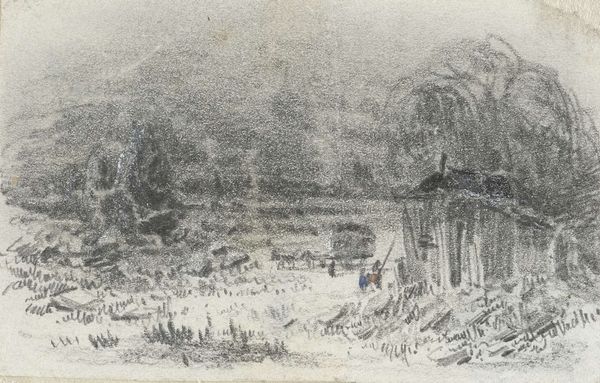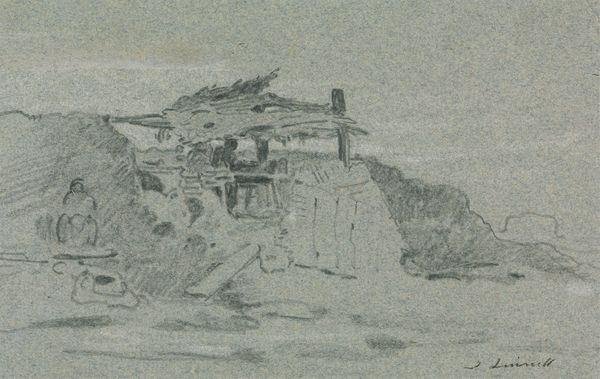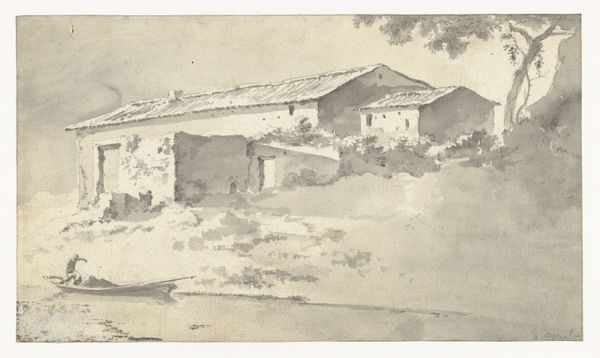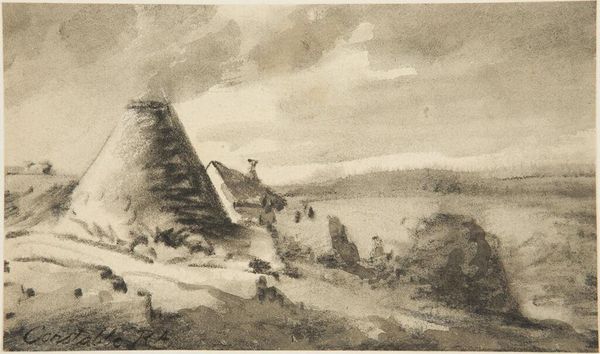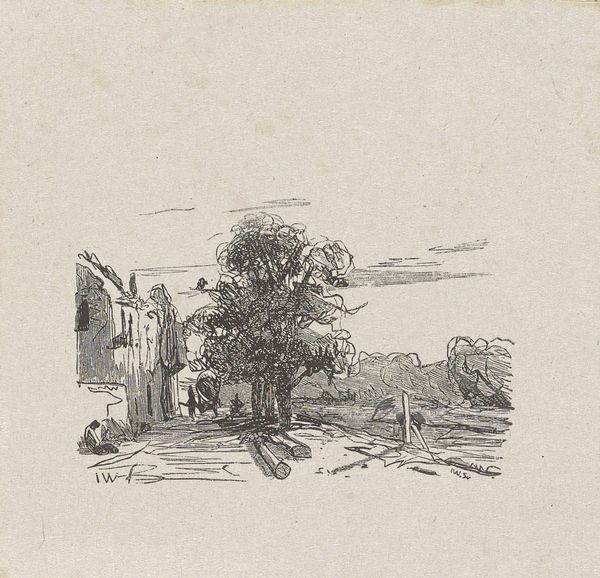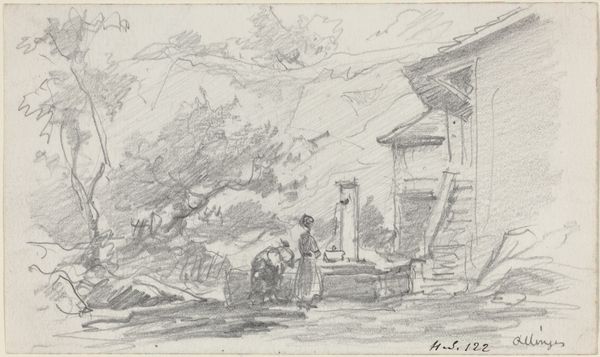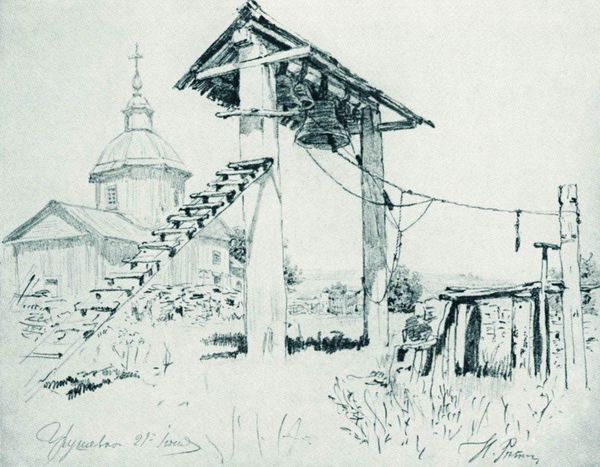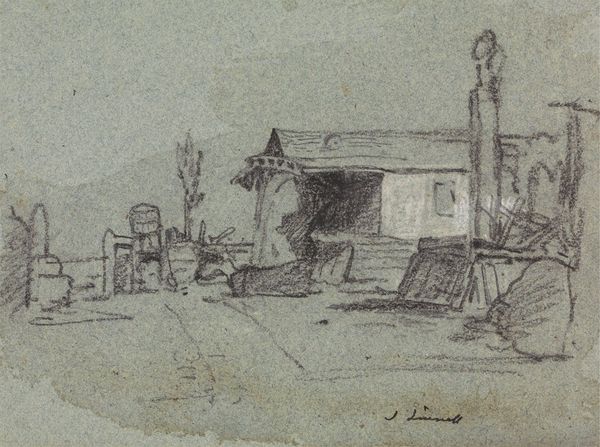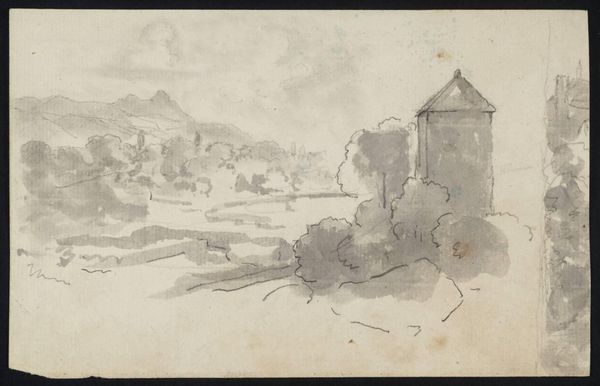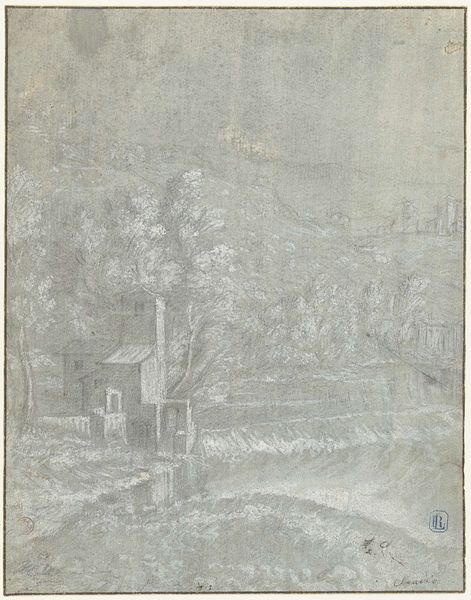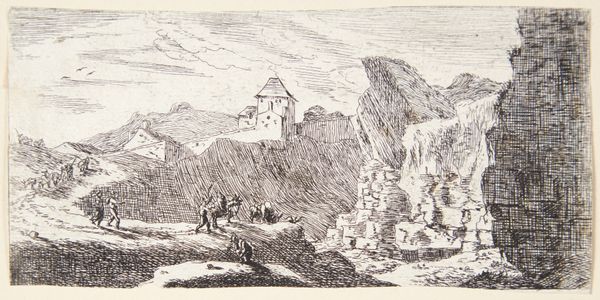
Twee knielende lieden op de trap voor een kapelletje in de bergen 1792 - 1868
0:00
0:00
watercolor
#
landscape
#
figuration
#
watercolor
#
romanticism
#
watercolor
Dimensions: height 109 mm, width 93 mm
Copyright: Rijks Museum: Open Domain
Curator: Let's take a look at this watercolour by Pierre Luc Charles Ciceri, created sometime between 1792 and 1868. It's titled "Two Kneeling People on the Steps in Front of a Chapel in the Mountains." Editor: Immediately, I’m struck by the muted tones. Sepia washes create a feeling of melancholy. The soft focus almost makes it feel like a dream. Curator: The Romantic era truly embraced emotional landscapes. Consider how pilgrimage and religious architecture intertwine with burgeoning concepts of nationhood and personal faith during this period. The image of a solitary chapel nestled in a mountain landscape resonated deeply. Editor: The two figures kneeling seem quite small in relation to the imposing structure of the chapel and the expansive sky. There's a clear hierarchy present. Does that indicate humility before a greater power? The landscape and architecture seem imbued with symbolic meaning here. Curator: That is exactly what Ciceri is aiming to elicit. The church, small but mighty, implies its religious force over common people and land. Also, note the detail, or lack thereof, given to these subjects. Editor: You’re right, their lack of defining features almost dehumanizes them. Could that be interpreted as the insignificance of the individual in the face of organized religion? The emotional weight of devotion, sacrifice, and faith becomes tangible here. Curator: Possibly, but don't forget this comes from a period where the artist starts viewing themself as "special" within society. Note the position of the artist above the subjects. Editor: An interesting social commentary on the role of the artist, too. Well, examining these symbols reveals cultural memory and continuity, which helps reveal the emotional and psychological weight they have through time. Curator: Indeed. It's a beautiful encapsulation of how art reflects societal shifts. Editor: A lovely work for unveiling the spirit and cultural touchstones that live inside symbols of history.
Comments
No comments
Be the first to comment and join the conversation on the ultimate creative platform.
